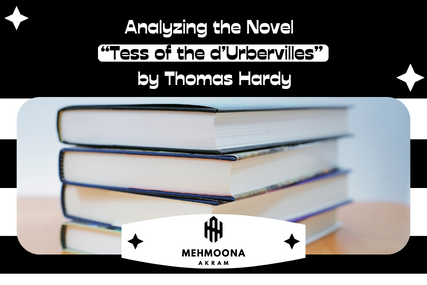
Introduction
Thomas Hardy’s novel “Tess of the d’Urbervilles” is a classic work of literature that continues to captivate readers with its profound themes and complex characters. Published in 1891, this novel explores the fate and struggles of its protagonist, Tess Durbeyfield, in a society that often seems unrelenting and unforgiving. In this blog post, we will delve into the novel, examining its major themes, characters, and the author’s use of symbolism to convey a powerful message about class, gender, and fate.
The Social Context
Before diving into the analysis of the novel, it is crucial to understand the social context in which “Tess of the d’Urbervilles” is set. The story takes place in rural England during the late 19th century, a time marked by significant social and economic changes. The rigid class structure of Victorian society is a central backdrop to the story, where the distinctions between the aristocracy, the middle class, and the working class are clearly defined.
Themes in “Tess of the d’Urbervilles”
- Fate and Determinism: One of the most prominent themes in the novel is the idea of fate and determinism. Tess’s life is shaped by a series of unfortunate events and decisions beyond her control. From her family’s ill-fated association with the d’Urbervilles to her encounter with Alec d’Urberville and her subsequent relationship with Angel Clare, Tess’s destiny seems preordained, and she often feels powerless to change it. Hardy explores the idea that individuals are bound by their circumstances and that escaping one’s fate is nearly impossible.
- Social Class and Inequality: The novel also delves into the stark divisions between social classes. Tess’s lower-class upbringing and her aspirations for a better life clash with the expectations of the higher social classes. The d’Urbervilles represent the upper echelons of society, and Tess’s association with them leads to her downfall. Hardy criticizes the rigid class system and its detrimental effects on individuals like Tess, who are trapped by their social status.
- Gender Roles and Double Standards: Gender roles and the double standards imposed on women in Victorian society are another central theme. Tess’s tragic fate is influenced by societal expectations of female purity and virtue. She is unfairly judged and condemned for her actions, while the men around her face fewer consequences for their behavior. This theme highlights the injustice and hypocrisy inherent in the Victorian treatment of women.
Character Analysis
- Tess Durbeyfield: Tess is a complex and multi-dimensional character who embodies the struggles of women in her time. She is a symbol of innocence and purity, but she is also a victim of her circumstances. Tess’s inner turmoil and moral dilemmas make her a relatable and sympathetic character. Her resilience and determination to protect her family, even in the face of adversity, make her a compelling protagonist.
- Angel Clare: Angel is Tess’s love interest and represents the idealized, progressive man of his time. However, his inability to accept Tess’s past reveals the limitations of his supposedly enlightened views. Angel’s character reflects the conflicting attitudes towards women and morality in Victorian society.
- Alec d’Urberville: Alec is the antagonist of the story, a symbol of male entitlement and manipulation. His actions towards Tess lead to her downfall and set the tragic events of the novel in motion. Alec’s character serves as a critique of the predatory behavior often tolerated by society.
Symbolism in the Novel
Hardy employs rich symbolism throughout the novel to enhance its themes and characters. Some notable symbols include:
- The Red House: The d’Urberville mansion symbolizes the allure and danger of the upper class. It is where Tess’s fate takes a tragic turn, and its opulence contrasts sharply with Tess’s humble origins.
- The White Robe: Tess’s white robe, which she wears when she meets Angel, symbolizes her innocence and purity. It also represents the expectations society places on women to be chaste and virtuous.
- The Dairy: The dairy where Tess works is a place of temporary refuge and happiness for her. It symbolizes the possibility of a better life and love. However, it also becomes a place of suffering when her past catches up with her.
Conclusion
“Tess of the d’Urbervilles” by Thomas Hardy is a timeless classic that continues to resonate with readers due to its exploration of themes such as fate, social class, gender, and morality. Through the tragic story of Tess Durbeyfield, Hardy critiques the injustices of Victorian society and highlights the challenges faced by women in that era. The novel’s enduring relevance lies in its ability to provoke thought and reflection on the societal norms and values that continue to shape our lives today. As readers, we are left with a haunting reminder of the power of fate and the consequences of societal expectations on individuals, making “Tess of the d’Urbervilles” a work of literature that remains as compelling as ever.



